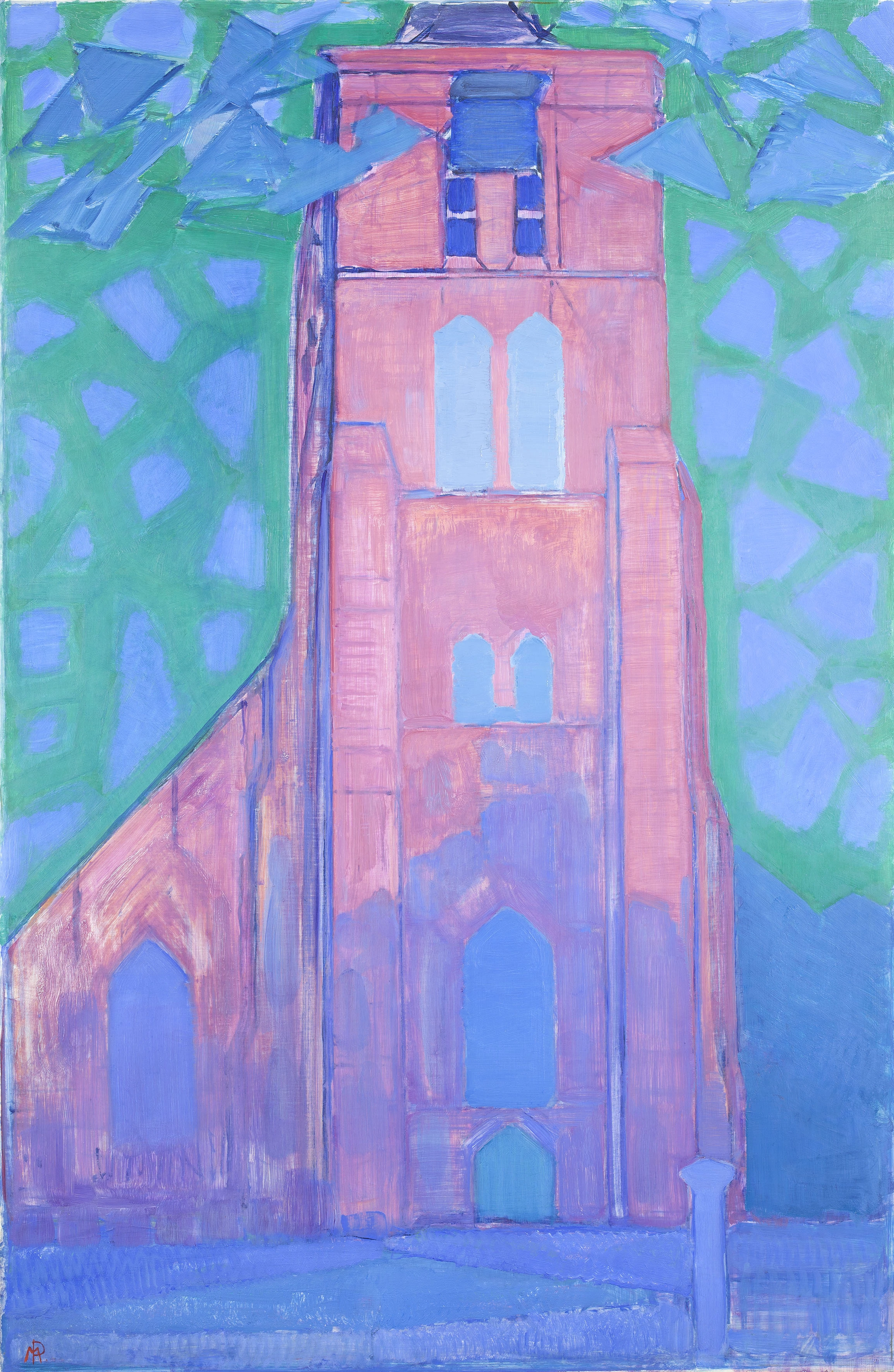


Piet Mondrian is famous for his rigorously geometric abstract paintings, but earlier in his career, like many of his fellow painters in the early 20th century, Mondrian painted landscapes. In 1911, Cubism was exploding in Paris, and Mondrian was vacationing in the Netherlands seaside town of Domburg, where his paintings of sand dunes and churches blended cubist shapes with fauvist color.
In this bright portrait of one of the Zeeland province’s many church towers, the evening sun sets fire to the brick façade and an evening shadow creeps up from below. After completing the image, Mondrian painted the edges of frame, a technique possibly borrowed from Georges Seurat’s pointillist canvases, then sold the work to Anna Bruin, a local pharmacist and avid collector of Mondrian’s work.
